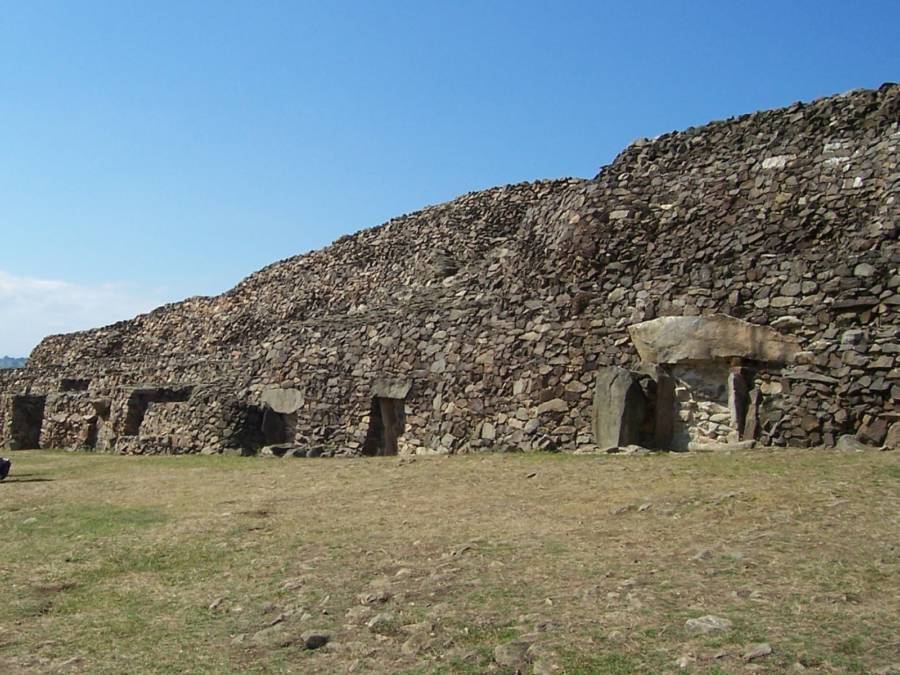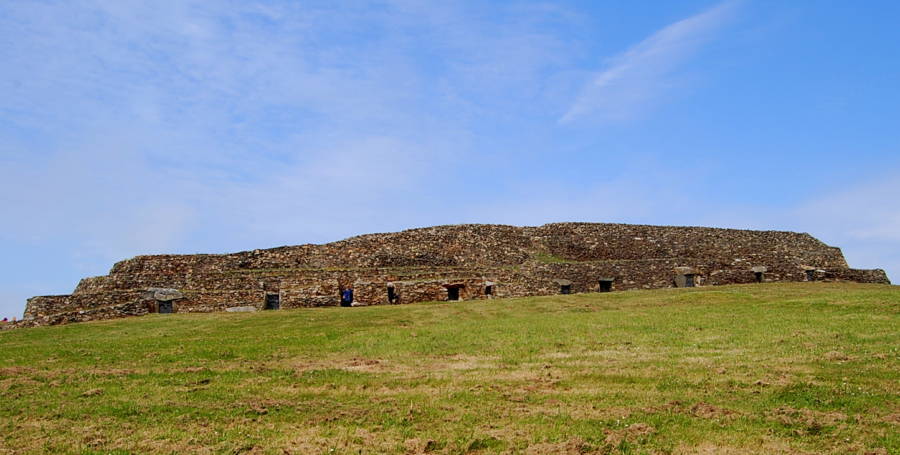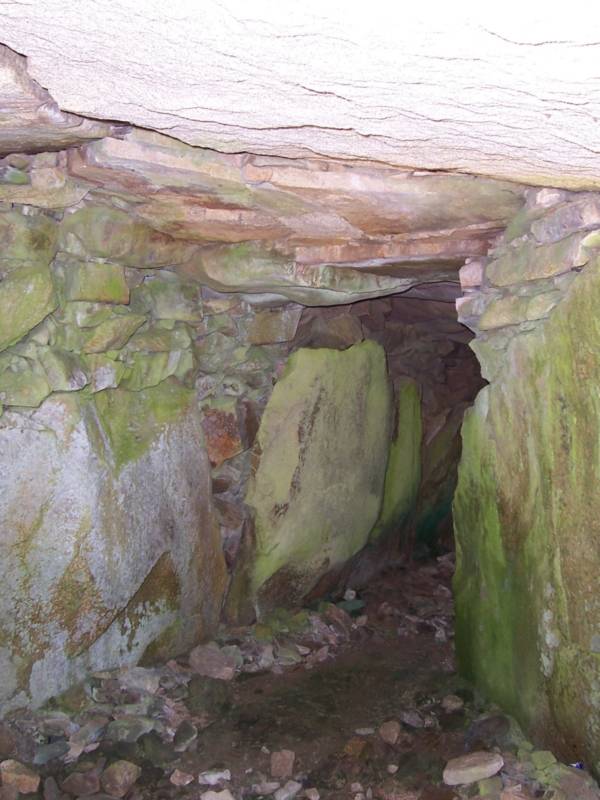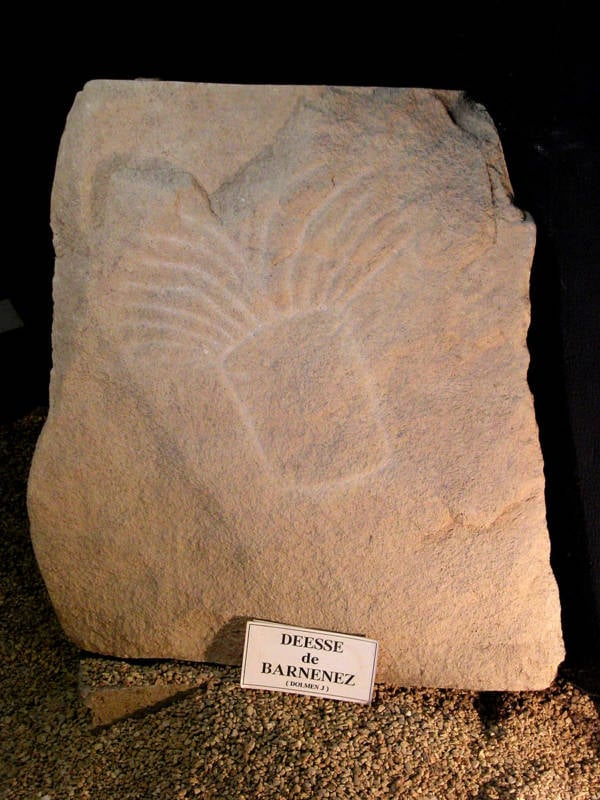Cairn Of Barnenez, France

Wikimedia Commons
The Cairn of Barnenez, dating back to 4,800 BCE, is one of the oldest surviving examples of Neolithic art and architecture. It almost didn’t make it to the present — in the 1950s, the site was being used as a quarry for paving stones, a damaging operation that nearly destroyed the site. Fortunately, the tumulus’ hidden chambers were discovered in the nick of time.

Wikimedia Commons
Eleven chambers line the passage tomb — so named because of the single long passage that bisects the hill — where archaeologists have uncovered some of the most interesting examples of megalithic art: stone drawings of bows, axes, snakes, and several indecipherable repeating symbols. They also found axes, flint, and arrowheads.
According to Encyclopedia, the cairn’s construction was accomplished across several disparates phases. Overlooking the Morlaix inlet in Plouézoch, the structure’s footprint is shaped like a trapezoid, with all 11 passageways running parallel to each other.

Wikimedia Commons
Many of the orthostats within the chambers and passageways are adorned by carvings that depict axes, bows, goddesses, and horns. Interestingly, the stones containing these carvings were found to have been first used elsewhere, and placed upright, before being relocated and used in the Barnenez tomb.

Wikimedia Commons
The Oldest Buildings In The World That Continue To Endure
The Neolithic Era saw the beginning of architecture as we know it — and that any of it survives today is a testament to the genius of a bygone age.
It was a hard age, a time full of new questions for humanity. One of the mysteries archaeologists and anthropologists still puzzle over is why — why did Neolithic humans suddenly begin to farm and build?
For years, researchers pointed to the changing climate. The last Ice Age was ending, making agriculture newly possible, and farming meant building permanent settlements.
But today, some anthropologists are stressing a different factor: a shift in human cognition. It’s no coincidence, they say, that the Neolithic Age witnessed astonishing new art. The pottery, sculpture, and carvings that decorated the newly formed settlements were as important to the inhabitants as the walls themselves.
The Neolithic Age witnessed the birth of civilization in all its aspects: its architecture, its communities, and its spirit.
Now that you know about some of the world’s oldest structures, take an in-depth look at Turkey’s Göbekli Tepe, the ancient temple that predates Stonehenge. Then read up on Pumapunku, the holy site where the Incas say the world was created.





